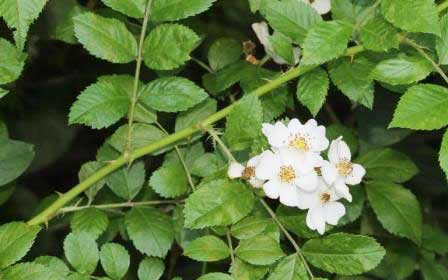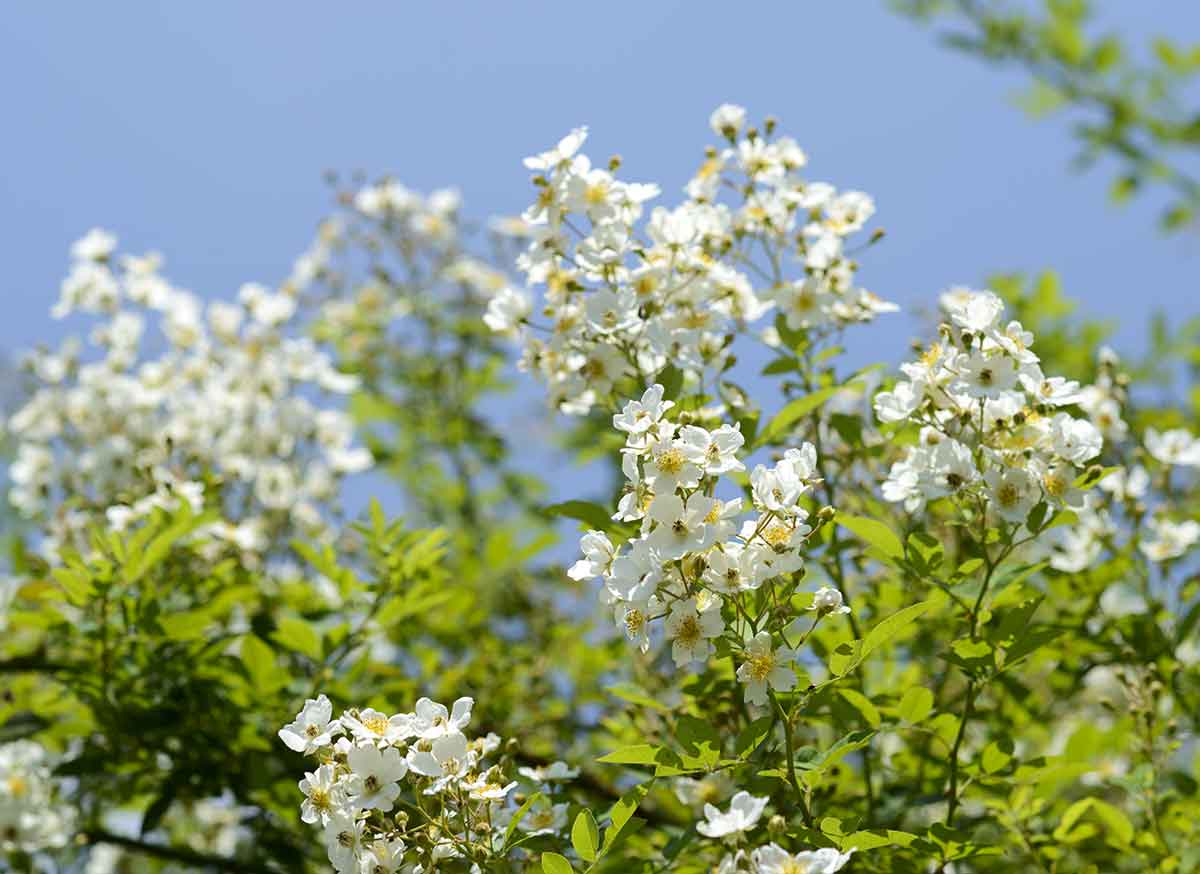Family: Rosaceae
Other common names: rambler rose and baby rose
Background
Multiflora rose was introduced into the eastern United States in 1866. It is native to eastern Japan, China, and Korea. It was introduced into the U.S. to act as a “living fence” for farmers to use to keep their cattle maintained and also to help in erosion control.
Currently, it is designated as a noxious weed in several states including Ohio, Pennsylvania, West Virginia, and New Jersey. Due to its tenacious growing habit, it is a pest to natural ecosystems and farm fields.
Distribution and Habitat
Multiflora rose is very abundant in the eastern United States and also in Oregon and Washington. It can tolerate and adapt to many different types of soil, from farm fields to wetlands.
Plant: Arching stems with curved thorns, Multi-stemmed, and sometimes a climbing vine.
Leaves: Divided into 5 to11 leafed leaflets. Small oval leaves with sharply toothed edges.
Flowers, fruits and seeds: Clusters of white to pinkish, 1 in. flowers that appear during May. Small bright red fruits or rose hips during the summer.
Reproduction: The average plant produces up to one million seeds in one year. These seeds remain viable in soil for 20 years.
Prevention and Control: Multiflora rose is considered an invasive species in Ohio. Do not plant multiflora rose. Control has been effective by the use of continuous mowing, chemicals, (herbicides applied to the soil), and mechanical means (pulling out seedling by hand).
Look-a-likes:
Pasture rose (Rosa carolina) http://www.illinoiswildflowers.info/prairie/plantx/pasture_rosex.htm
Swamp rose (Rosa palustris)
http://www.fs.fed.us/wildflowers/plant-of-the-week/rosa_palustris.shtml
Allegheny blackberry (Rubus allegheniensis)
http://plants.usda.gov/core/profile?symbol=rual
For more information on invasive plants see:
“Invasive Plants of Concern in Ohio”


